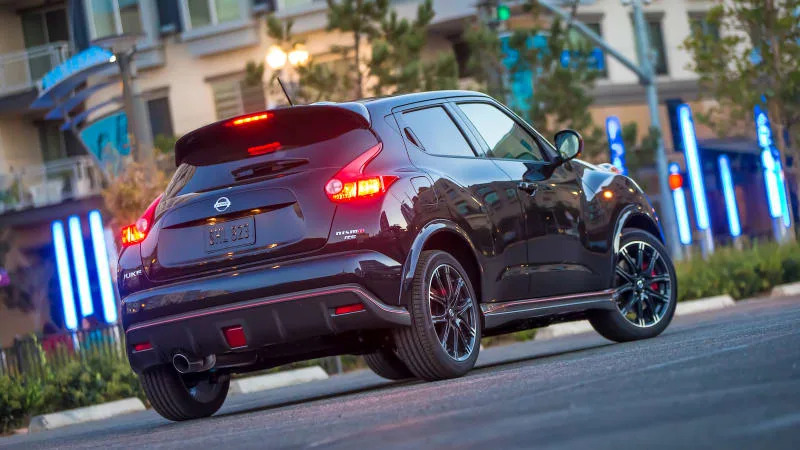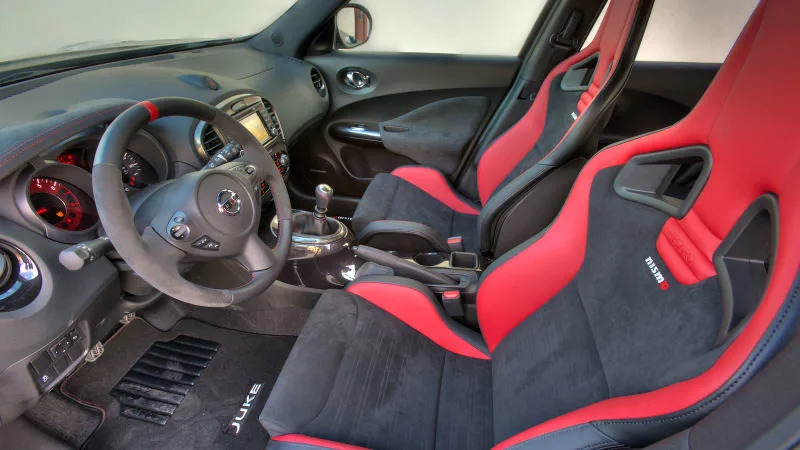Future Classic: Nissan Juke

Embracing the Nissan Juke as a future classic car might require some patience and realignment of one’s concept of “beauty.” Certainly, this funky automobile looks as though it might have served as the daily driver for E.T. when he finally made it to “home,” in whatever galaxy that was. Nonetheless, it’s an intriguing proposition for those who lean toward one side of the polarized opinions about the Juke’s bold styling.
While one of today’s emerging trends in SUV fashion is to offer them bigger — with three rows and seven seats — the Juke when it was first sold in 2010 helped to spearhead a movement in smaller, compact crossovers. It has undeniable presence and a quality some defined as “fun.” In fact, the name was derived from the sports term “to juke” or “to dance or change directions demonstrating agility.”
Why is the Nissan Juke a Future Classic?
Initially, the Juke emerged at the Geneva Motor Show as the Nissan Qazana concept in 2009. There were two generations of Juke up until it was discontinued from the United States market in 2017: the first was sold from 2010, then revamped to generation two in 2014. Just before its demise, however, the Japanese showed up with a more powerful, face-lifted edition in 2013 called the Juke NISMO. More on that shortly.
It is the odd exterior of the first-generation Juke that defines it — in the view of some, at least — as a classic.
Perhaps the most memorable feature of the Juke’s design philosophy was its front fascia.
There were these funky, L-shaped lamps installed above the grille which people initially thought were the headlights. Wrong: those were the turn signals and position lights. The headlights were the oversized, globe-like units placed into the bumper, on the same level as the chromed Nissan badge. From the sides, the Juke featured a hatchback inspired body design.

In most markets, the Juke in gen-two arrived with Bluetooth and navigation, a rear-view camera and keyless entry. There was a small cargo area and five seats, but booking one in the rear was a dicey proposition if the ride was longer than to the local Dunkin’.
In some markets, a base 1.5-liter inline-four engine generated 99 horsepower; there were optional motors, including a turbocharged 1.6-liter four with 188 horsepower that came standard in the United States. Transmissions ranged from a standard manual to a continuously variable unit with six predetermined virtual gears.
Which is the ideal example of the Nissan Juke?
The “ultimate” Juke (although “ultimate” may be a bit of a stretch) would be the NISMO RS trim, NISMO being part of the company’s motorsports division (NISsan MOtorsports). Note, there were both NISMO and NISMO RS versions of the hatchback, with the RS being the ultimate performance model.

Describing it as a “hot hatch” for its day — it was new in 2013 — isn’t too far off. The NISMO RS offered as much as 215 horsepower. It had improved standard equipment over the non-NISMO car, such as Recaro front seats and carbon fiber, a modified steering wheel and suspensions, 18-inch wheels, engine tuning, and “torque vectoring” option.
It shared many basics with the Renaultsport Clio RS. Some reviews had the car achieving a 0-to-60 time of less than seven seconds. Sadly, the fancy all-wheel-drive technology in the Juke could only be paired with the CVT automatic gearbox, which lowered power to 211 horses and torque from 210 lb-ft to just 184. In its most powerful form, the Juke was a legitimately spicy little hatchback that was quite fun to drive.
One rung below the RS was the base NISMO model that offered 197 horsepower and 184 lb-ft of torque. That model got unique suspension tuning and wheels, but none of the other performance-minded upgrades fitted to the top-spec NISMO RS.
While many found the base Juke amusing to “admire” and delightful to drive, this NISMO versions drove fairly firmly; speed bumps were not its friends. Despite upgrades to its chassis parts, the NISMO wasn’t a very smooth partner on the asphalt dance floor.
Be sure to check out our used vehicle listings; they can be helpful for finding a good deal. You can narrow the options down by a radius around your ZIP code, and be sure to pay attention to the deal rating on each listing to see how a vehicle compares with others in a similar area.
Are there any good alternatives to the Nissan Juke?
Most alternatives to the unique Juke are found among European choices — Citroen, Vauxhall, and the Renault Captur, which is very Juke-ish.
Consider the Mazda CX-3, a compact SUV with a bit more power and tech and an upscale interior. Or perhaps a Jeep Renegade, a not-too-expensive runabout with an edge, but it doesn’t have the character of a Juke.





